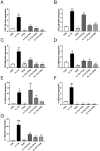Triptolide alleviates psoriasis through inhibiting the Wnt5a/β-Catenin signaling pathway
- PMID: 40365308
- PMCID: PMC12069328
- DOI: 10.3389/fphar.2025.1534118
Triptolide alleviates psoriasis through inhibiting the Wnt5a/β-Catenin signaling pathway
Abstract
Background: Psoriasis, an immune-mediated chronic inflammatory skin disease, is characterized by keratinocyte proliferation and inflammatory cell infiltration. T ripterygium wilfordii is a potential treatment option for psoriasis, and triptolide (TP) is one of its active components. TP may possess the potential to treat psoriasis; however, its mechanism of action remains unknown.
Objective: The research aims to explore the therapeutic effect of TP on psoriasis and elucidate its potential targets.
Methods: The imiquimod-induced psoriasis-like lesion mouse model was used to identify the mechanism underlying the therapeutic effect of TP.RNA-seq strategy was utilized to forecast the targets and mechanisms of TP in the context of psoriasis.Finally, we verify the effect of TP in the IL-17A-induced keratinocyte hyperproliferation and inflammation model.
Results: TP reduced epidermal hyperplasia as well as psoriasis area and severity index scoring. Moreover, treatment with TP inhibited IMQ-induced splenomegaly and T-helper 17 cell differentiation in the psoriatic mice. Additionally, the treatment reduced the serum levels of pro-inflammatory cytokines such as interleukin (IL)-17A, IL-22, IL-23, IL-6, and tumor necrosis factor-α in the mice. The sequencing of RNA obtained from skin lesions of the psoriatic mice indicated that treatment with TP significantly downregulated Wnt5a RNA levels. Moreover, the Wnt5a/β-catenin pathway upregulated by IMQ was downregulated by treatment with TP. Additionally, IL-17A induced and upregulated Wnt5A and β-catenin mRNA expression, and TP inhibited this upregulated expression in HaCaT cells. Furthermore, TP inhibited proliferation, promoted apoptosis, and arrested the cell cycle in the IL-17A-induced keratinocyte hyperproliferation and inflammation model, thereby exhibiting its anti-inflammatory properties.
Conclusion: TP alleviated psoriasis in mice by exerting anti-inflammatory effects and inhibited keratinocyte proliferation, which was partly achieved by regulating the Wnt5a/β-catenin signaling pathway.
Keywords: Wnt5a/β-catenin; inflammation; interleukin-17A; psoriasis; triptolide.
Copyright © 2025 Chen, Wang, Wang, Cai, Dou, Qu, Zhu, Zhao, Zheng, Zhao and Chen.
Conflict of interest statement
The authors declare that the research was conducted in the absence of any commercial or financial relationships that could be construed as a potential conflict of interest.
Figures







Similar articles
-
Daphnetin inhibits proliferation and inflammatory response in human HaCaT keratinocytes and ameliorates imiquimod-induced psoriasis-like skin lesion in mice.Biol Res. 2020 Oct 20;53(1):48. doi: 10.1186/s40659-020-00316-0. Biol Res. 2020. PMID: 33081840 Free PMC article.
-
Hyperforin Ameliorates Imiquimod-Induced Psoriasis-Like Murine Skin Inflammation by Modulating IL-17A-Producing γδ T Cells.Front Immunol. 2021 May 5;12:635076. doi: 10.3389/fimmu.2021.635076. eCollection 2021. Front Immunol. 2021. PMID: 34025642 Free PMC article.
-
Effect of γ-secretase inhibitor on Th17 cell differentiation and function of mouse psoriasis-like skin inflammation.J Transl Med. 2018 Mar 10;16(1):59. doi: 10.1186/s12967-018-1442-6. J Transl Med. 2018. PMID: 29523162 Free PMC article.
-
Indirubin ameliorates imiquimod-induced psoriasis-like skin lesions in mice by inhibiting inflammatory responses mediated by IL-17A-producing γδ T cells.Mol Immunol. 2018 Sep;101:386-395. doi: 10.1016/j.molimm.2018.07.011. Epub 2018 Jul 29. Mol Immunol. 2018. PMID: 30064075
-
Beta-catenin non-canonical pathway: A potential target for inflammatory and hyperproliferative state via expression of transglutaminase 2 in psoriatic skin keratinocyte.Dermatol Ther. 2020 Nov;33(6):e14209. doi: 10.1111/dth.14209. Epub 2020 Sep 7. Dermatol Ther. 2020. PMID: 32816372 Review.
References
-
- Castilla C., Mcdonough P., Tumer G., Lambert P. C., Lambert W. C. (2012). Sometimes it takes darkness to see the light: pitfalls in the interpretation of cell proliferation markers (Ki-67 and pcna). SKINmed 10 (2), 90–92. - PubMed
LinkOut - more resources
Full Text Sources

